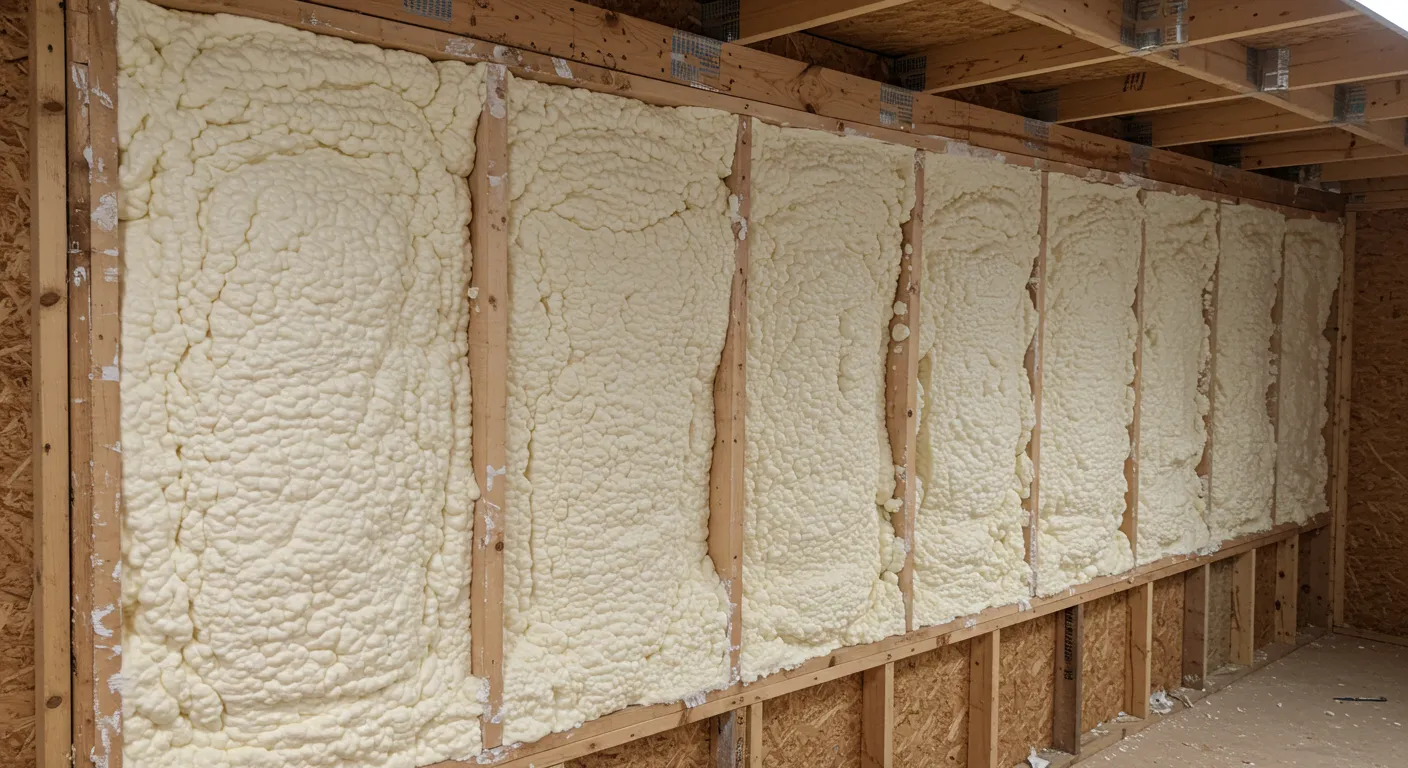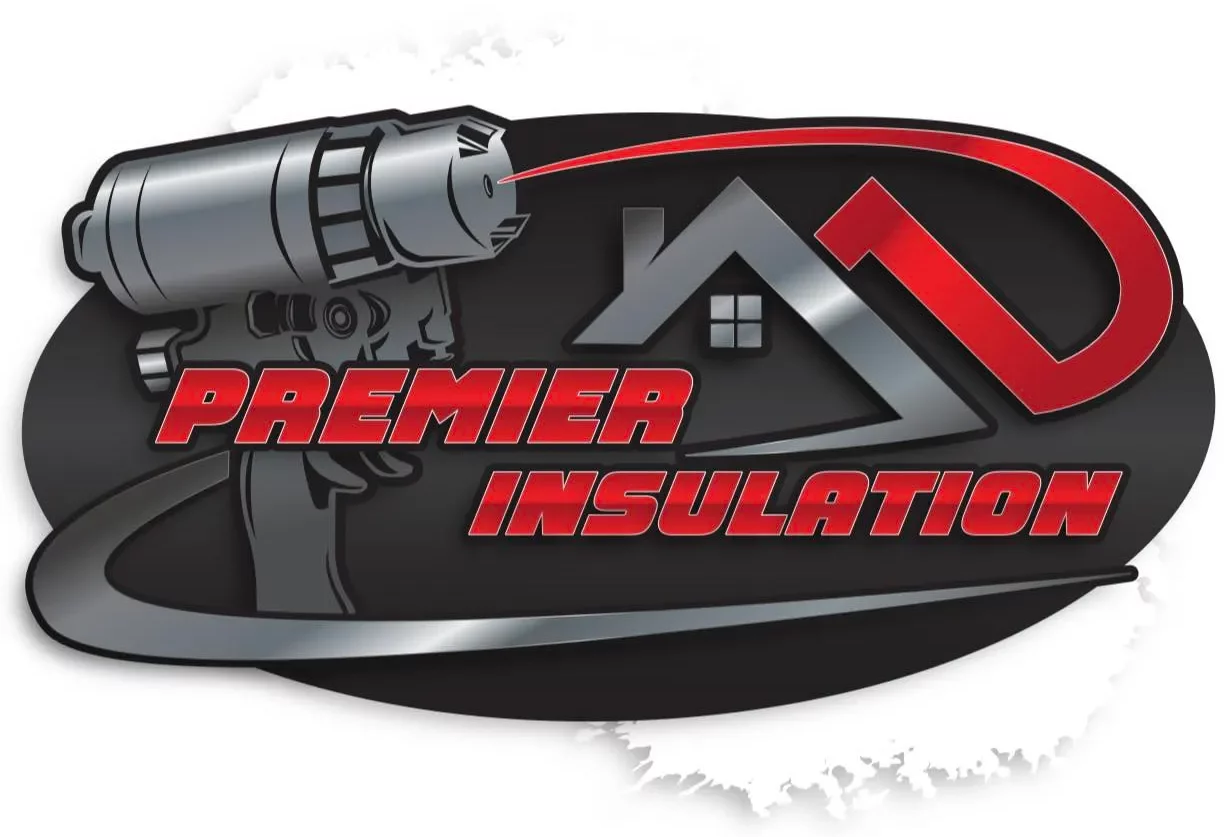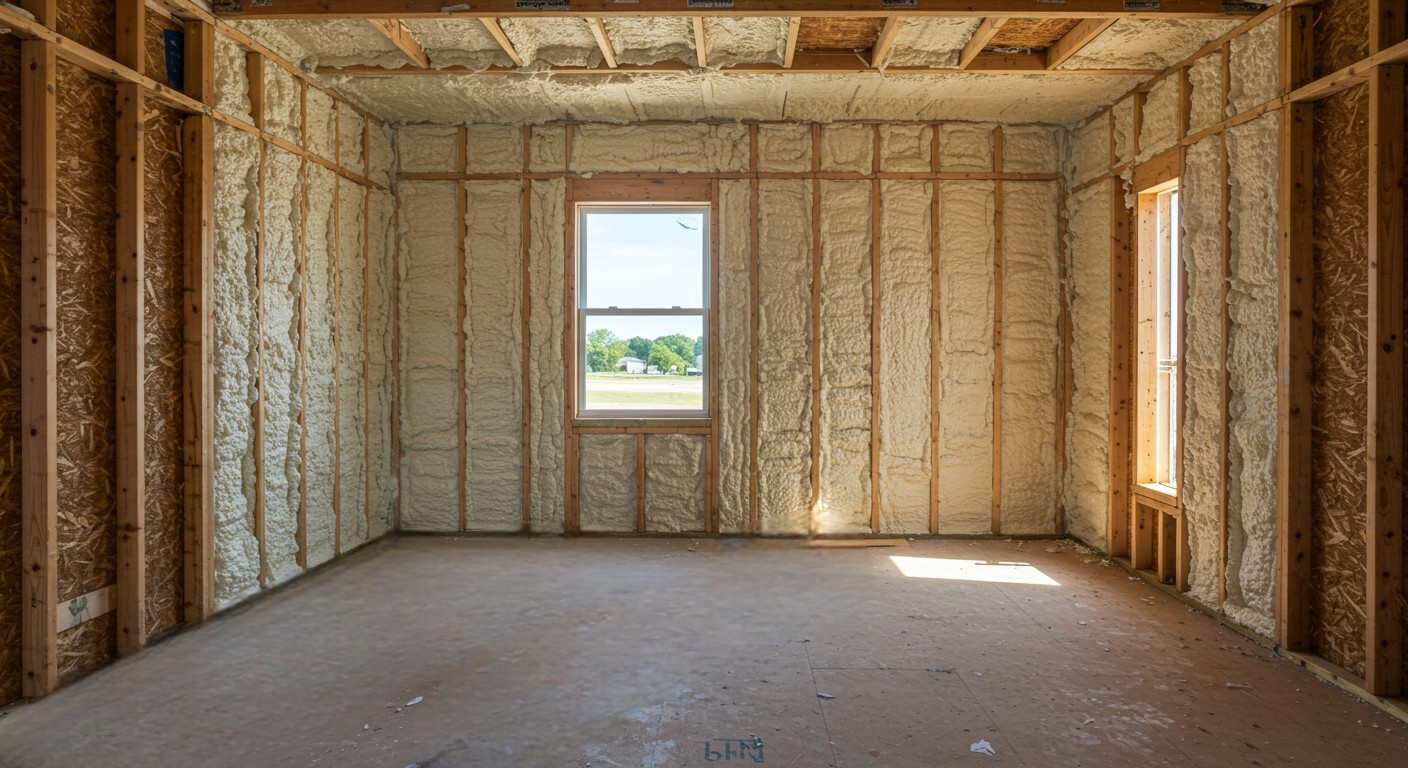Spray foam insulation provides higher thermal resistance, superior air sealing, and long-term moisture control compared to traditional insulation options like fiberglass batts or blown-in cellulose. Its expanding application method enables full cavity coverage, reducing thermal bridging and air leakage common weaknesses in older methods.
Premier Insulation GA has applied spray foam in a wide range of structures, including agricultural barns, homes, and commercial warehouses. First-hand results consistently show improved indoor comfort, lower HVAC loads, and better control over indoor air quality and humidity levels. The information below draws from direct field experience and verified product specifications.
Spray Foam vs Traditional Insulation Comparison
| Feature | Spray Foam (Open & Closed Cell) | Traditional Insulation (Fiberglass/Cellulose) |
|---|---|---|
| R-Value per inch | 3.5–7 (Closed-cell up to 7) | 2.2–3.8 |
| Air sealing capability | High – seals gaps, cracks, voids | Low – requires separate air barrier |
| Moisture resistance | Closed-cell is moisture-resistant | Susceptible to mold and moisture retention |
| Installation complexity | Requires trained application | Easier DIY installation |
| Longevity | 20+ years with minimal degradation | Loses effectiveness over time |
| Pest deterrence | Seals entry points, discourages pests | Gaps can allow pest intrusion |
| Application thickness control | Fully adjustable during application | Pre-cut batts limit flexibility |
| Settling/shifting risk | Does not settle once cured | Cellulose can settle; batts may slump |
Technical Specs and Data
| Specification | Open-Cell Spray Foam | Closed-Cell Spray Foam | Blown-In Cellulose | Fiberglass Batts |
|---|---|---|---|---|
| R-Value (per inch) | ~3.5 | ~6.5–7 | ~3.2 | ~2.9–3.8 |
| Vapor permeability | High (permeable) | Low (acts as vapor barrier) | Medium | Medium |
| Expansion ratio | 100:1 | 30–40:1 | N/A | N/A |
| Soundproofing capability | Good | Moderate | Moderate | Low–Moderate |
| Application areas | Walls, roofs, floors | Walls, roofs, basements | Attics, wall cavities | Walls, attics, floors |
| Average lifespan | 20–30 years | 30–40 years | 10–15 years | 10–20 years |

Performance in Humid Climates like Georgia
Closed-cell spray foam resists moisture penetration, making it particularly effective in Georgia’s high-humidity conditions. In crawl spaces and basements, it reduces the risk of mold growth and wood rot. Open-cell foam, while more vapor-permeable, provides excellent air sealing and sound dampening when applied with a vapor barrier.
A recent press release by Premier Insulation GA highlights real-world performance benefits of spray foam in residential and commercial buildings across Georgia.
Bonus Tip: In humid southern zones, always confirm the dew point location within wall assemblies to avoid trapping moisture behind foam layers.
Things to Consider Before Making a Decision
- Structure Type: Open-cell works well for interior walls and ceilings. Closed-cell suits basements, crawl spaces, and metal buildings.
- Budget Range: Spray foam is more expensive upfront but lowers energy costs long-term.
- Moisture Levels: High-moisture areas require closed-cell for vapor control.
- HVAC Load: Reduced air leakage may require HVAC resizing.
- Access: Retrofit jobs may require temporary wall or ceiling removal for spray foam access.
Bonus Tip: Always test for existing moisture before applying any foam insulation to avoid trapping dampness behind sealed layers.
Common Questions Before Choosing Spray Foam
How much does spray foam cost per square foot?
Pricing varies by type: open-cell averages $0.50–$0.80/sq ft; closed-cell ranges from $1.00–$1.50/sq ft.
Can spray foam be applied over old insulation?
Only after removal. Existing insulation must be cleared to ensure proper adhesion and expansion.
Does spray foam qualify for energy rebates?
Yes, certain closed-cell and open-cell products meet energy efficiency standards required for rebates. Always check local regulations.
How long does installation take?
Most residential jobs are completed in 1–2 days depending on size and complexity.
Spray Foam Services Offered by Premier Insulation GA
- Open-Cell Spray Foam Insulation: Best for interior walls and ceilings needing sound dampening and full cavity fill.
- Closed-Cell Spray Foam Insulation: Suited for moisture-prone or high-structural-strength areas.
- Crawl Space Encapsulation: Combines spray foam, vapor barriers, and drainage systems for moisture control.
- Air-Sealing: Targets gaps and penetrations to improve envelope tightness and HVAC efficiency.
Verified Market Insights
- Homes with spray foam save up to 15–20% on heating and cooling annually (Source: U.S. Department of Energy)
- Closed-cell foam adds up to 300% greater racking strength to wall assemblies (Source: FEMA Technical Bulletin 2-08)
- Air leakage accounts for 25–40% of energy used for heating and cooling a typical home (Source: ENERGY STAR)
Get Expert Insulation Guidance
For trusted spray foam insulation services in Georgia, contact:
Premier Insulation GA 📞 (229) 554-3939 📧 info@premierinsulationga.com
Get direct answers to your insulation questions and schedule a property evaluation from professionals with hands-on experience across residential, commercial, and agricultural settings.
Frequently Asked Questions
What’s the difference between open-cell and closed-cell spray foam?
Open-cell is lighter, expands more, and provides good sound absorption. Closed-cell is denser, more moisture-resistant, and adds structural rigidity.
Does spray foam insulation attract mold?
No. It does not provide a food source for mold and closed-cell acts as a moisture barrier, reducing mold risk.
Is spray foam safe for indoor air quality?
After curing (usually 24 hours), it is inert and does not off-gas harmful substances. Always ventilate during and after installation.
How can spray foam reduce HVAC load?
By sealing leaks and increasing thermal resistance, HVAC systems run less frequently and may even be downsized.
Can spray foam be used in older homes?
Yes. It’s effective in retrofits but may require removal of older materials and evaluation of framing and moisture levels.


